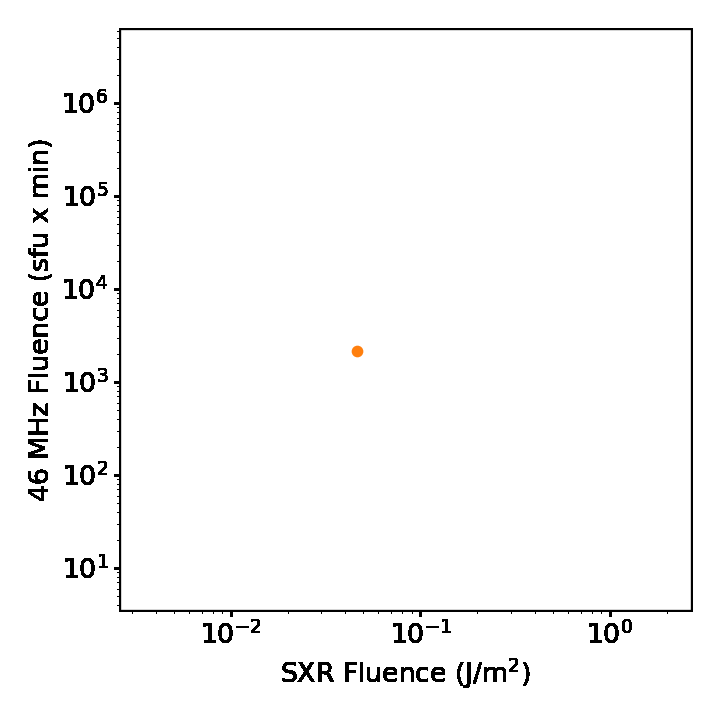Daily Image
16-08-2022Forecasting Solar Energetic Particles (SEPs) by combining SXR and low frequency radio observations
| Submitter: | Liam Clarke |
| Description: | Solar flares are bursts of light from solar active regions, visible at virtually every wavelength. Particle acceleration from flares can produce measurable increases in energetic (10keV – 1GeV) particle fluxes at Earth called Solar Energetic Particles (SEPs). SEPs pose increased radiation risk to astronauts and high-altitude flights, interfere with radio communications and damage satellite electronics. Some of the impacts of SEPs on human activity can be mitigated with advance warning. SEPs don’t always occur following a flare. In order to observe SEPs at Earth, enough energy needs to be released to accelerate a significant number of particles to high energies, and particles need to escape from the magnetic fields of the Sun into to the interplanetary medium. These conditions can be inferred from the soft X-ray (1-8 Å, SXR) fluence and Radio fluence of the preceding flare respectively. So, using the photoemissions from a flare, the probability of a following SEP can be forecast within 18 mins of the flare (8 mins for light to reach Earth, 10 mins for enough data to be collected for prediction). To do this, we took data from 200 ≥ M2 class flares from 1995-2017 and made a scatter plot of SXR fluence and 46 MHz radio fluence, with SEPs shown by red stars. Using this, we can overlay a continuous probability function to give the likelihood of an SEP following a flare, dependent on its position in the scatter plot (colour map). We then choose a threshold probability contour (white line), above which we predict an SEP to occur. For this example, this allows us to correctly forecast 95% of the 200 flares, with 12/17 (71%) SEP detections, and 6/18 (33%) false alarms. |
| Copyright: | Liam Clarke |
| Tweet |  |
